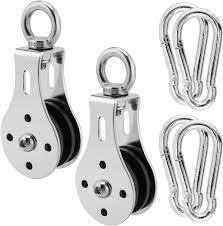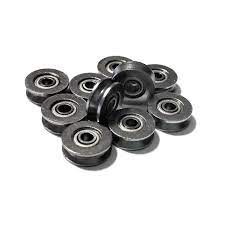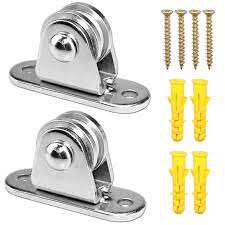Product Description
25 YEARS manufacturer Multiple engine/Size Crankshaft Tensioner, Crankshaft Pulley Change Small Size 6D22 Replacement of Many Types of machine excavator.
Our main products:
steel cover lock, filter, oil grid, pump, cylinder head, crankshaft, camshaft, connecting rod, connecting rod bearing, valve, plunger, nozzle, exhaust valve, engine assembly, intake pump , fan blade, engine preheater, radiator, intake valve, main bearing, crankshaft bearing, nozzle, nozzle pipe, oil pump, piston, piston pin, piston ring, plunger, valve seat, thrust bearing, valve guide, valve Seats, valve seals, gasket sets, water pumps, turbochargers, generators, starters, sensors…
Please click here>>>>Contact us for more factory price,shipping and discounts
| ENGINE CUSHION | ||||||||||||||
| NO. | LB NO. | Model | OEM NO. | Name | NO. | LB NO. | Model | OEM NO. | Name | NO. | LB NO. | Model | OEM NO. | Name |
| 1 | KLB-Q3 | BELT TENSIONER | 15 | KLB-Q0017 | SK350-8 4pieces groove | BELT TENSIONER | 28 | KLB-Q0032 | 4BD1 4BG1 A:singlePK B:3PK |
3389198 | CRANKSHAFT PULLEY | |||
| 3 | KLB-Q0003 | 6CT | 3967190 | BELT TENSIONER | 16 | KLB-Q0018 | SK460 3pieces groove | BELT TENSIONER | 29 | KLB-Q0033 | EX200-1/3 6BD1 | CRANKSHAFT PULLEY | ||
| 4 | KLB-Q0004 | EC210 | 462280 | BELT TENSIONER | 17 | KLB-Q0019 | VOLVO360 | BELT TENSIONER | 30 | KLB-Q0034 | 6D31(NEW) | 173*140*34 | CRANKSHAFT PULLEY | |
| 5 | KLB-Q0005 | E325C | 144-1102 | BELT TENSIONER | 18 | KLB-Q571 | S6K | BELT TENSIONER | 31 | KLB-Q0035 | 6D31(OLD) | 160*120*34 | CRANKSHAFT PULLEY | |
| 6 | KLB-Q0006 | PC200-8 | BELT TENSIONER | 19 | KLB-Q0571 | PC60 4D95 | 150*66*43 | CRANKSHAFT PULLEY | 32 | KLB-Q0036 | E200B/320 | 160*113*45 | CRANKSHAFT PULLEY | |
| 7 | KLB-Q0007 | VOLVO210 stainless steel | BELT TENSIONER | 20 | KLB-Q0571 | PC120-6 | CRANKSHAFT PULLEY | 33 | KLB-Q0037 | E320B | 160*110*45 | CRANKSHAFT PULLEY | ||
| 8 | KLB-Q0008 | VOLVO360 | BELT TENSIONER | 21 | KLB-Q571 | PC200-3 6D105 | 144*113*39 6138-31-1480 | CRANKSHAFT PULLEY | 34 | KLB-Q0038 | E320C | 170*143*45 | CRANKSHAFT PULLEY | |
| 9 | KLB-Q0009 | CA016/C7 | BELT TENSIONER | 22 | KLB-Q0571 | PC200-5 6D95 | 150*110*41 6207-31-1410 | CRANKSHAFT PULLEY | 35 | KLB-Q0039 | DH220-5 DB58 | CRANKSHAFT PULLEY | ||
| 10 | KLB-Q571 | VOLVO480 with Belt groove | BELT TENSIONER | 23 | KLB-Q0571 | PC200-6 6D95 | 155*154*42 6209-31-1410 | CRANKSHAFT PULLEY | 36 | KLB-Q0014 | DH | 2107-6004B | BELT TENSIONER | |
| 11 | KLB-Q0011 | VOLVO480 | BELT TENSIONER | 24 | KLB-Q0026 | PC200-6 6D102 | 6735-61-3280 220*54*19 | CRANKSHAFT PULLEY | 37 | KLB-Q0015 | EX | BELT TENSIONER | ||
| 12 | KLB-Q0012 | VOLVO480 | BELT TENSIONER | 25 | KLB-Q0571 | PC300-3 PC400 6D125 | 182*118*43 | CRANKSHAFT PULLEY | 38 | KLB-Q571 | EX200-5 6BG1 3pieces groove | 230*120*40 | CRANKSHAFT PULLEY | |
| 13 | KLB-Q0013 | E320C | BELT TENSIONER | 26 | KLB-Q571 | A:PC300-6 6D108 doublePK | 144*127*40 | CRANKSHAFT PULLEY | 39 | KLB-Q0030 | 4D31 | 168*100*35 | CRANKSHAFT PULLEY | |
1Q:What is your brand?
1A:Our own brand: Mita Group and its range of excavator parts.
2Q:Do you have your own factory? Can we have a visit?
2A:Absolutely, you are alwayswelcome to visit our factory.
3Q:How do you control the quality of the products?
3A:Our factory was obtained the ISO9001CERTIFICATE.Every process of the production is strictly controlled. And all products will be inspected by QC before shipment.
4Q:How long is the delivery time?
4A:2 to 7 days for ex-stock orders. 15 to 30 days for production.
5Q:Can we print our company logo onproduct and package?
5A:Yes, but the quantity of the order is required. And we need you to offer the Trademark Authorization to us.
6Q:Can you provide OEM BRAND package?
6A:Sorry, we can only offer our company ACT BRAND package or neutral packing,blank package ifyou need, and the Buyers’ Brand as authorized.7Q:How long is the warranty period?7A:3 months
| Certification: | ISO9001 |
|---|---|
| Standard Component: | Standard Component |
| Technics: | Casting |
| Material: | Aluminum |
| Type: | Crankshaft Tensioner |
| Transport Package: | Standard Packaging |
| Samples: |
US$ 15/Piece
1 Piece(Min.Order) | |
|---|
| Customization: |
Available
| Customized Request |
|---|

How do small pulleys improve the precision and control of machinery?
Small pulleys play a significant role in enhancing the precision and control of machinery. They are utilized in various applications to achieve precise movements, accurate positioning, and controlled operation. Here is a detailed explanation of how small pulleys improve the precision and control of machinery:
1. Mechanical Advantage:
– Small pulleys can be incorporated into systems that provide mechanical advantage, allowing machinery to exert greater force or achieve finer movements with reduced effort. By using pulley systems with different diameters or multiple pulleys in combination, machinery can achieve higher precision and control in performing tasks that require accurate force application or fine adjustments.
2. Reduction of Friction:
– Small pulleys equipped with high-quality bearings or low-friction materials help reduce friction in machinery. This reduction in friction allows for smoother movement and minimizes energy loss, enabling precise and controlled operation. By reducing the effects of friction, small pulleys contribute to the accuracy, repeatability, and responsiveness of machinery.
3. Speed Control:
– Small pulleys, when combined with variable-speed mechanisms, enable precise speed control in machinery. By adjusting the position of the belt or changing the pulley ratio, operators can regulate the speed at which the machinery operates. This speed control capability enhances precision, allowing for fine-tuning of processes that require specific speeds or gradual adjustments.
4. Positioning and Alignment:
– Small pulleys are utilized in machinery that requires precise positioning and alignment of components or workpieces. By incorporating pulley systems with accurate belt tensioning and alignment mechanisms, machinery can achieve precise movements and maintain consistent positioning. This is particularly important in applications such as CNC machines, robotics, and automated assembly systems.
5. Tension Control:
– Small pulleys are used to control tension in machinery where the tensioning of belts or cables is critical for proper operation. By adjusting the position or tension of the belt on the pulley system, operators can achieve precise tension control, ensuring optimal performance and preventing slippage or excessive strain. This is crucial in applications such as printing presses, textile machines, and material handling systems.
6. Versatile Movement:
– Small pulleys enable machinery to achieve versatile movement patterns and trajectories. By incorporating pulley systems with multiple axes of rotation or adjustable cable paths, machinery can perform complex or customized movements with precision and control. This versatility allows for the execution of intricate tasks, such as 3D printing, robotic arm movements, or multi-axis machining.
7. Feedback and Control Systems:
– Small pulleys can be integrated into feedback and control systems in machinery. By utilizing encoders or sensors in conjunction with pulley systems, machinery can gather real-time data on position, speed, or tension and make adjustments accordingly. This closed-loop control mechanism enhances precision, enabling machinery to maintain accuracy and respond to dynamic operating conditions.
8. Safety and Error Prevention:
– Small pulleys contribute to the safety and error prevention aspects of machinery. By incorporating pulley systems with safety features such as emergency stops, limit switches, or overload protection, machinery can ensure safe operations and prevent accidents. Additionally, precise control provided by small pulleys minimizes the risk of errors or deviations, enhancing the overall reliability and quality of the machinery.
Overall, small pulleys significantly improve the precision and control of machinery by providing mechanical advantage, reducing friction, enabling speed control, achieving precise positioning and alignment, controlling tension, facilitating versatile movement, integrating feedback and control systems, and enhancing safety. Their use in various applications enhances the accuracy, repeatability, and reliability of machinery, leading to improved performance and productivity.

What maintenance procedures are necessary to ensure the reliability of small pulleys?
Proper maintenance procedures are essential to ensure the reliability and longevity of small pulleys. Regular maintenance helps prevent issues such as wear, misalignment, or loss of functionality, ensuring that the pulleys continue to operate smoothly and efficiently. Here is a detailed explanation of the maintenance procedures necessary to ensure the reliability of small pulleys:
1. Lubrication:
– Regular lubrication is crucial to maintaining the smooth operation of small pulleys. Lubricants reduce friction between moving parts, preventing excessive wear and prolonging the life of the pulley. It is important to use the appropriate lubricant recommended by the pulley manufacturer and follow the recommended lubrication intervals.
2. Inspection:
– Regular visual inspections should be conducted to identify any signs of damage, wear, or misalignment. Inspect the pulleys for cracks, chips, or deformation that may affect their performance. Check for proper alignment and ensure that the pulleys are securely mounted. Any issues should be addressed promptly to prevent further damage or failure.
3. Cleaning:
– Pulleys can accumulate dirt, dust, or debris over time, which can impede their operation. Regular cleaning helps maintain optimal performance. Use a soft brush or cloth to remove any build-up on the pulley surfaces. Avoid using harsh chemicals or excessive force that could damage the pulley or its components.
4. Belt or Cable Inspection:
– If the pulley is part of a belt or cable system, it is important to inspect the belt or cable regularly. Check for signs of wear, fraying, or stretching. Replace worn or damaged belts or cables to ensure proper engagement with the pulley and prevent slippage or failure.
5. Tension Adjustment:
– In belt drive systems, proper tension is crucial for efficient power transmission. Regularly check the tension of the belts and adjust them as needed. Follow the manufacturer’s recommendations for the appropriate tension levels. Improper tension can lead to belt slippage, reduced efficiency, and premature wear of the pulleys.
6. Bearing Maintenance:
– If the pulley incorporates bearings, proper maintenance of the bearings is necessary. Follow the manufacturer’s guidelines for bearing maintenance, including lubrication and inspection. Regularly check for any signs of bearing wear, noise, or excessive play. Replace worn or damaged bearings to ensure smooth rotation of the pulley.
7. Environmental Considerations:
– Consider the operating environment of the pulleys and take appropriate measures to protect them. For example, in outdoor applications, shield the pulleys from moisture, dirt, or extreme temperatures. In corrosive environments, consider using pulleys made from corrosion-resistant materials or apply protective coatings.
8. Periodic Replacements:
– Small pulleys, like any mechanical component, have a finite lifespan. It is important to monitor their condition and consider periodic replacements based on wear, usage, and manufacturer recommendations. Replacing pulleys before they fail can prevent unexpected downtime or damage to other components.
9. Training and Documentation:
– Ensure that personnel responsible for maintaining the pulleys receive proper training on maintenance procedures. Maintain documentation of maintenance activities, including lubrication schedules, inspection records, and any replacements or repairs performed. This documentation helps track the maintenance history and facilitates proactive maintenance planning.
By following these maintenance procedures, small pulleys can be kept in optimal condition, ensuring their reliability and maximizing their lifespan. Regular lubrication, inspection, cleaning, belt or cable inspection, tension adjustment, bearing maintenance, environmental considerations, periodic replacements, and proper training and documentation contribute to the overall reliability and performance of small pulleys.

What are the key design features and components of small pulleys?
Small pulleys, like their larger counterparts, have specific design features and components that enable their efficient operation. Here are the key design features and components of small pulleys:
1. Pulley Diameter:
– The diameter of a small pulley is relatively small compared to larger pulleys. It is measured from one edge of the pulley groove to the opposite edge. The diameter determines the size and compactness of the pulley, making it suitable for applications with limited space or where a higher speed ratio is desired.
2. Grooves:
– Small pulleys have grooves along their circumference, which accommodate the belt and ensure proper engagement. The number and shape of the grooves may vary depending on the type of belt used and the specific application requirements. Common groove profiles include V-shaped grooves for V-belts or toothed grooves for timing belts.
3. Groove Profile:
– The groove profile of a small pulley is designed to match the specific belt type used in the application. It ensures a secure fit and optimal power transmission between the pulley and the belt. Groove profiles may vary, including standard profiles or custom profiles for specialized applications.
4. Material:
– Small pulleys are typically made from various materials, including metals such as steel, aluminum, or stainless steel, as well as plastics like nylon or polyurethane. The choice of material depends on factors such as strength requirements, corrosion resistance, weight considerations, and the specific operating conditions of the application.
5. Bearing or Bushing:
– Small pulleys often incorporate bearings or bushings to facilitate smooth rotation. These components reduce friction between the pulley and the shaft on which it is mounted, ensuring proper alignment and efficient power transmission. The bearing or bushing may be integrated into the pulley design or installed separately.
6. Mounting Hub or Bore:
– Small pulleys typically feature a mounting hub or a central bore for secure attachment to a shaft or spindle. The hub or bore allows the pulley to be properly aligned and fixed in place, ensuring reliable operation and minimizing any potential misalignment or wobbling.
7. Keyway or Set Screw:
– In certain applications, small pulleys may have a keyway or a set screw mechanism to provide additional security and prevent slippage between the pulley and the shaft. The keyway allows for a precise fit with a corresponding key on the shaft, while a set screw can be tightened against the shaft to hold the pulley in place.
8. Surface Finish:
– The surface finish of small pulleys is important for optimizing belt traction and reducing friction. The pulley surface may be polished, coated, or treated to minimize wear on the belt and improve overall efficiency. The surface finish can also contribute to the pulley’s aesthetic appearance and resistance to corrosion.
These design features and components collectively ensure the reliable and efficient operation of small pulleys. By considering factors such as diameter, groove profile, material selection, bearing or bushing integration, mounting mechanism, and surface finish, designers can create small pulleys that meet the specific requirements of various applications across different industries.


editor by CX
2023-11-18